|
IRAN - Land of the upside-down tulip, part 2
David Millward
Having arrived in Tehran after an overnight flight from London, we embarked on a full day's journey south to Esfahan. The freeway follows the north-western margin of the central Iranian desert, a desolate, arid place. Alongside the road, thin white encrustations of gypsum patchily cover the ground and in the distance we could see the haze shimmering above the salt lakes and marshes. Our tiredness lifted somewhat at the sight of the desert floor covered in places with poppies.
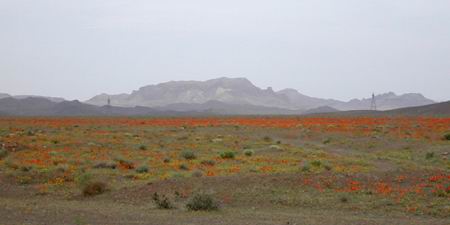
It had been my intention to concentrate in this second article on the non-bulbous plants seen during the trip. However, I notice that there are still several worthy bulbous examples and so I have included them here. One of the commonest smaller bulbs of the Zagros is Gagea sp. At some places these were abundant with, for example, Pushkinia, Colchicum and Corydalis in stony soils in areas of snow melt.
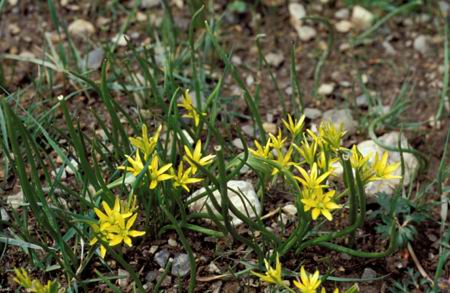
Gagea
The lovely Anemone biflora grows on rocky and gravely slopes in the Zagros mountains up to at least 2400 m. The bicolour form of this very variable species seen at several localities had a yellow interior and coppery to red reverse to the flower. What a shame that this species isn't more amenable to cultivation!
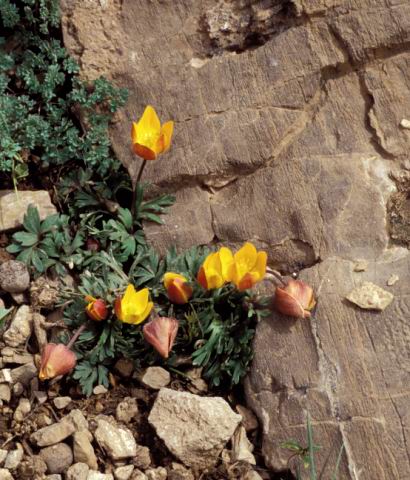
Also fairly common at many of the very dry bulb sites mentioned in my previous article (August 2003) was either Leontice armeniacum (left) or L. leontopetalum subsp. ewersmannii (right). These unusual members of the Berberis family have cork-like tubers deep beneath the surface. Neither are much seen in cultivation, though L. armeniacum looks as though it might be an interesting addition for the bulb frame in warmer parts.
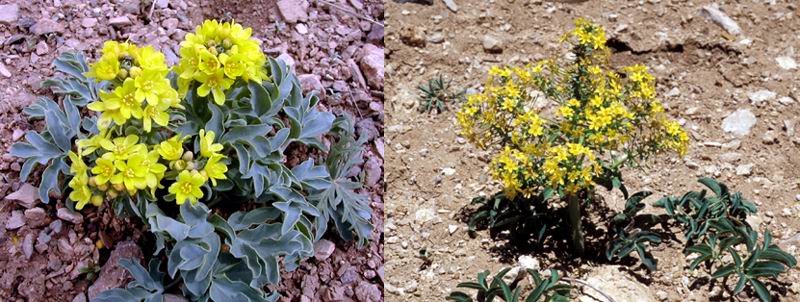
Though not strictly a bulbous species, Eremurus has a fleshy rootstock enabling it to survive in semi-arid regions. Eremurus persicus is a common sight in such areas of Iran, seen here south of Esfahan, en route to Lordegan.
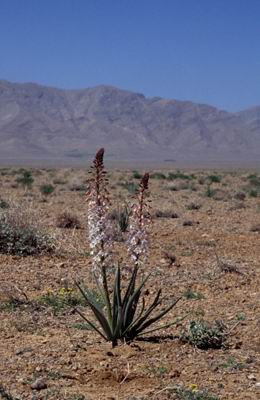
And at last turning to non-bulbous plants. The hot dry summers of the Zagros mountains would not seem to be the ideal location in which to hunt for primulas. Thus, it was a surprise to find Primula gaubeana growing in abundance in a valley south of Lordegan. Rivers in the limestone mountains of this region are typically seasonal, with only the major streams flowing much beyond snow melt times. In one steep-sided torrent that clearly must flow throughout the year, Primula gaubeana clothes the tufa-lined waterfalls and is particularly abundant in the spray zone.
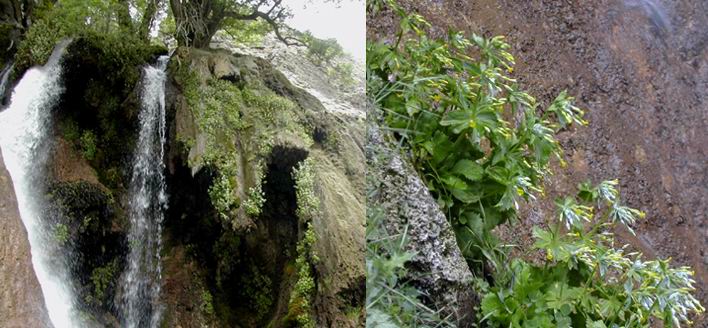
Protected from the full force of spray in a damp cave, and growing with the maidenhair fern, this specimen shows that white meal is present on the leaves as well as the bracts and calyx.
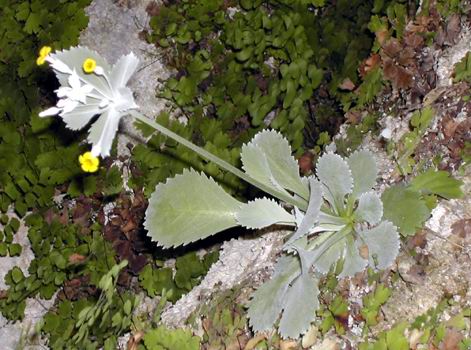
Dionysia is the genus that is much associated with Iran and we had high expectations of seeing a number of species during our journeys. Sadly, we did not see some of the more spectacular members of the genus, despite searching a number of sites for which we had been given directions. However, south of Lordegan, near the Primula locality, the near vertically bedded limestone is eroded into many cliffs, the typical habitat for Dionysia.
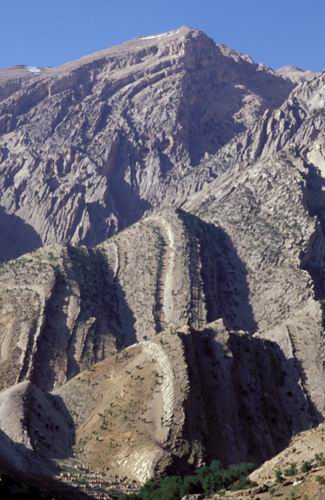
It was here that we saw the rather lax tufts of the species illustrated below.
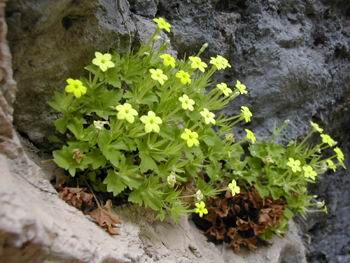
The similarity of the leaf-like bracts at the base of the flowers of both the Dionysia and Primula gaubeana illustrates well the closeness of the two genera.
On the thin screes beneath the Dionysia-bearing cliffs grew the Daphne-like shrub below. The tough, shiny, dark green leaves of this plant seem to be well adapted to the arid environment.
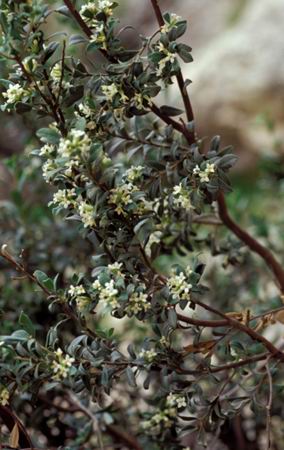
Examples of other plants seen in the Zagros include these distinctive members of the daisy family seen in the rather stony meadows.

This lax cushion Silene from above a 2800 m high pass.
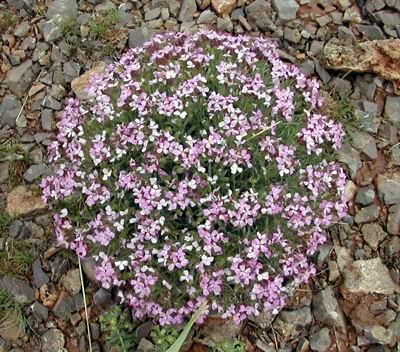
And this Ranunculus in the snowmelt.
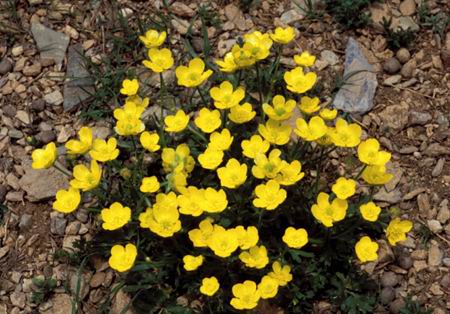
Travelling about 50 km south-east of Tabriz, in north-west Iran, we visited the cave houses at Kandovan; there are similarities with those seen at Cappadocia in Turkey. This area, Mt Sahand, is an extinct volcano. During one of its eruptions, some 50 million years ago, hot pyroclastic flows filled a valley in the same area in which Kandovan now sits. A new valley has been cut into the tuff more recently and the valley sides have been etched by the wind to form the unusual conical shapes. Though the tuff is compact and cemented, it is soft enough to be worked readily and has been hollowed out to provide homes. It is thought that people first started living in Kandovan over 800 years ago, and today the cave houses are home to about 600 people.
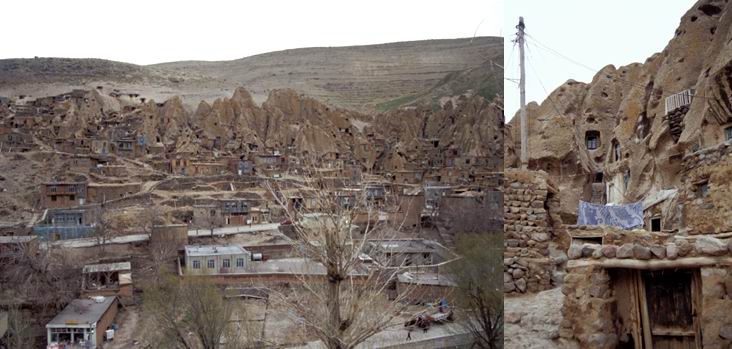
The north-east-facing slopes of the Elburz mountains and the shores of the Caspian experience a very different climate to that of the rest of Iran. With an average rainfall of 1300 mm, it is wet enough in the lowlands to grow rice, and the mountain slopes are clothed in a rich forest of Acer, Alnus, Ailanthus, Buxus, Carpinus, Fagus and Parrotia.
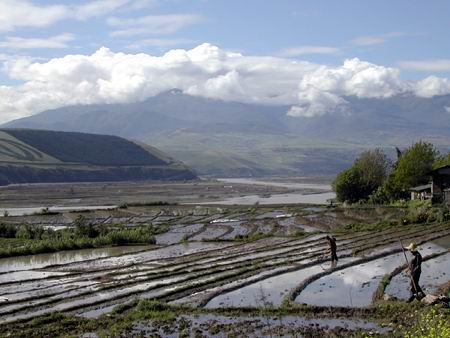
The Elburz mountains rise very steeply from the Caspian shore, reaching the tree line on the pass west to Asalem at around 1900 m. Beneath the last few remaining trees were the leaves of Galanthus transcaucasicus, long since flowered, and clumps of Paeonia tomentosa, a wonderful peony with pale lemon-coloured flowers.
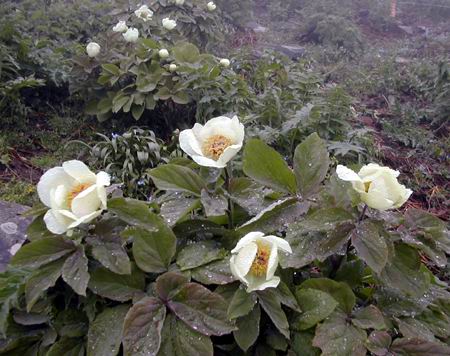
Thousands of a second peony species decked the drier, western side of the same pass at around 2000 m, growing in thin, very stony soil on calcareous mudstone. These plants were of more compact habit and the leaves somewhat tougher compared with those from the wetter zone, but very few were in flower.
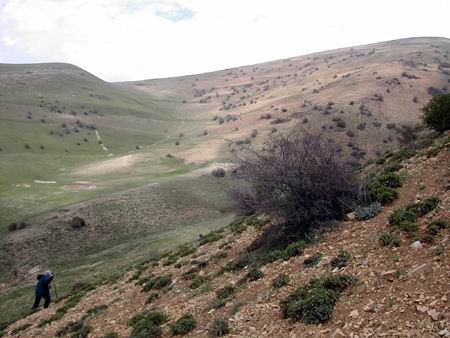
After some searching just a few flowers were seen, having a distinct cup shape and a lovely shade of yellow (right picture; compare with the other species). This species seems to have the characteristics of Paeonia mlokosewitschii, which is known to occur in Iran, though most readily accessible sources confine it to the Caucasus, some 350 km to the north.
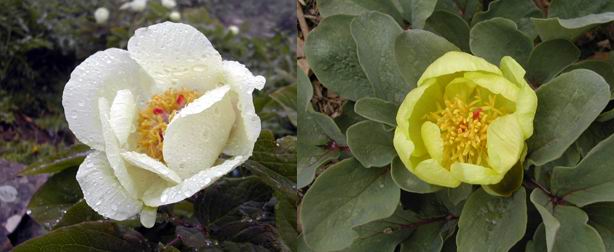
The top of the pass at around 2300 m was shrouded in cloud; visibility was no more than a few tens of metres and it was raining steadily. Yet we did find a few of the riches of this area. Among the sheets of Merendera, Pushkinia and Muscari were scattered Primula veris, and leaves of the long-since flowered Crocus gilanicus. Pulsatilla albana? was an unexpected find.
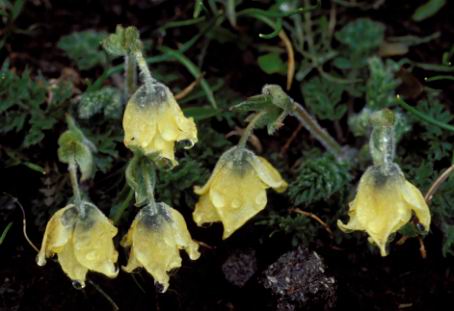
There was also this delightful Corydalis, reputedly a form of the variable C. verticillaris.
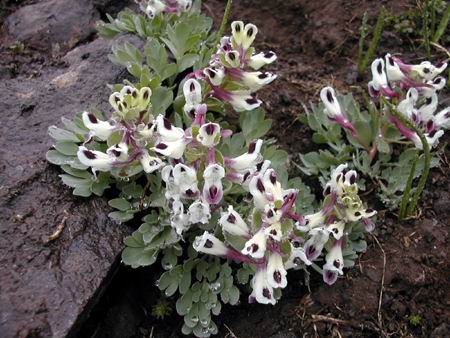
We had seen Corydalis at several localities in the Zagros, also under this name. Though variable in colour and in the form of the flower the examples here look distinct from that seen on the pass to Asalem.
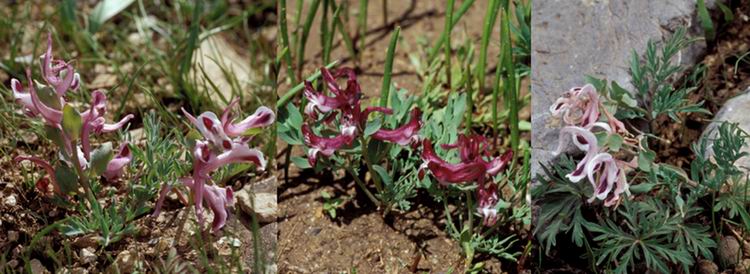
Growing with Paeonia mlokosewitschii was an Arnebia, possibly A. pulchra, well known in cultivation.
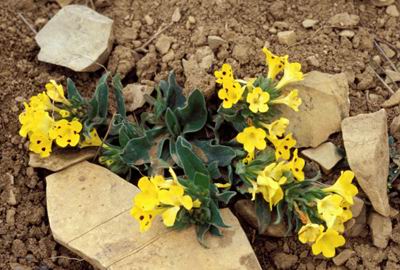
Other plants on the dry eastern side of the Elburz included this Onosma.
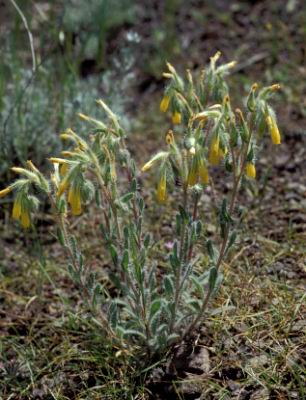
And locally the hillsides were decked with Aethionema, in many shades of pink.
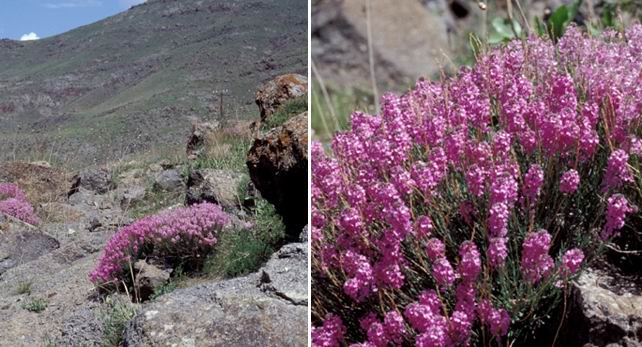
I cannot finish without mentioning one of the other great reasons for travelling to Iran - its rich architectural heritage. Many parts of the country have been severely affected by earthquakes throughout historical time, with significant loss of life and damage to its built heritage. Earthquake damage is readily seen in many of the buildings, but it was interesting to see how much effort is being put into active conservation of the heritage. The central square in Esfahan is very spacious, with the bazaar at one end, and two mosques and the Shah's Palace situated on the other sides. Sheikh Lotfallah Mosque is the smaller of the two religious buildings, but is exquisitely decorated both outside and in. The ceramic tile work is magnificent and I much appreciated the use of geometry throughout.
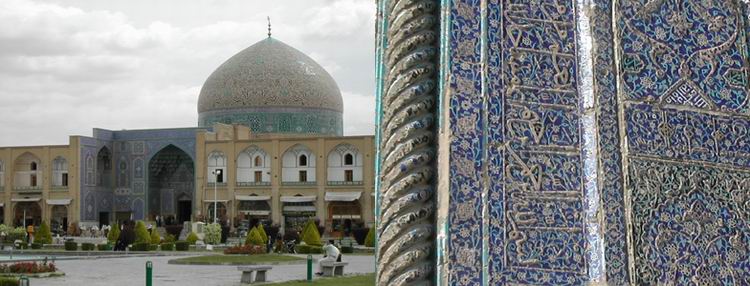
There are many fine secular buildings too, for example in Kashan, between the holy city of Qom and Esfahan. Water is an important feature of the larger dwellings, including this merchant's house, built in the nineteenth century, giving a feeling of calm and coolness in the searing heat in the Persian summer. Such buildings are commonly ornamented with delicate stone carvings and plaster work.
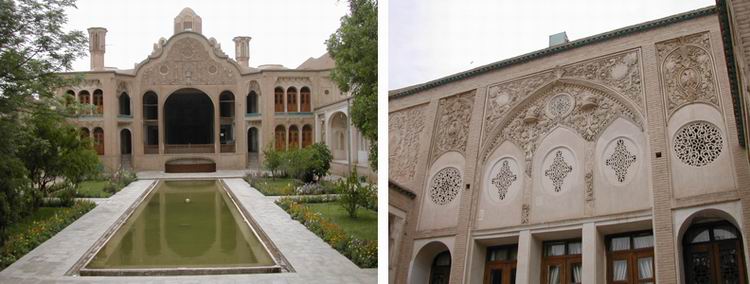
My farewell picture is of the snow-clad extinct and dissected volcano of Kuh-e-Sabalan. There is much to savour in this ancient "land of the upside-down tulip" and I have enjoyed sharing these images with you. Though the bulbous species have been relatively easy to identify, the same cannot be said of many of the others, and I apologise for leaving many in this instalment unidentified. I would welcome any suggestions, perhaps through the forum.
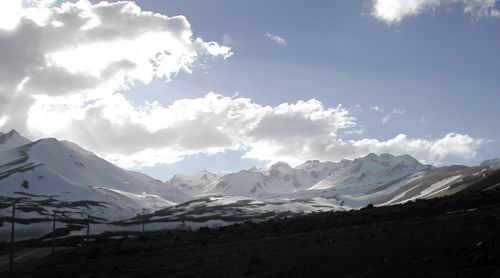
^ back to the top ^
|

